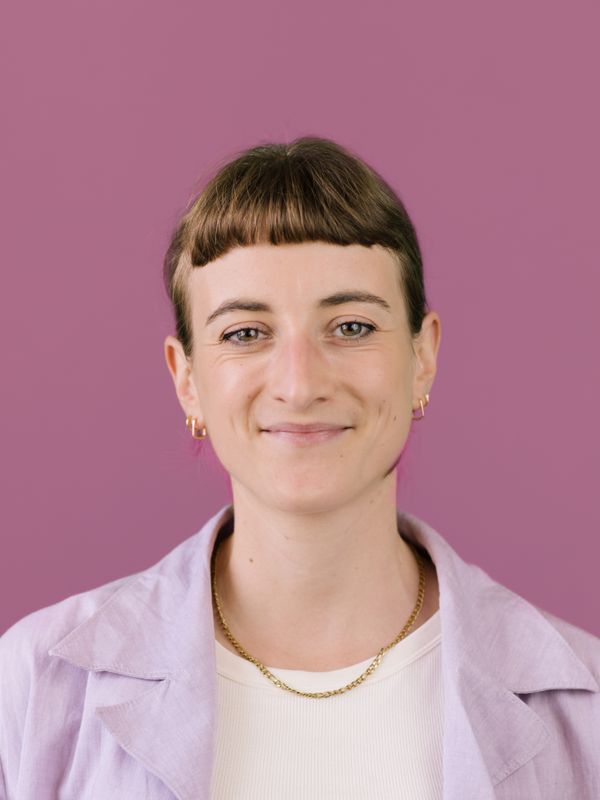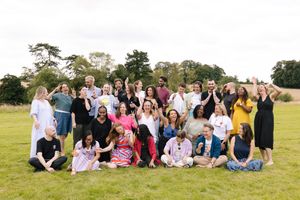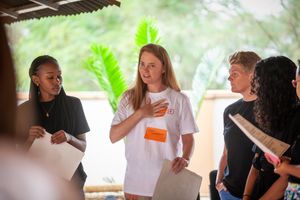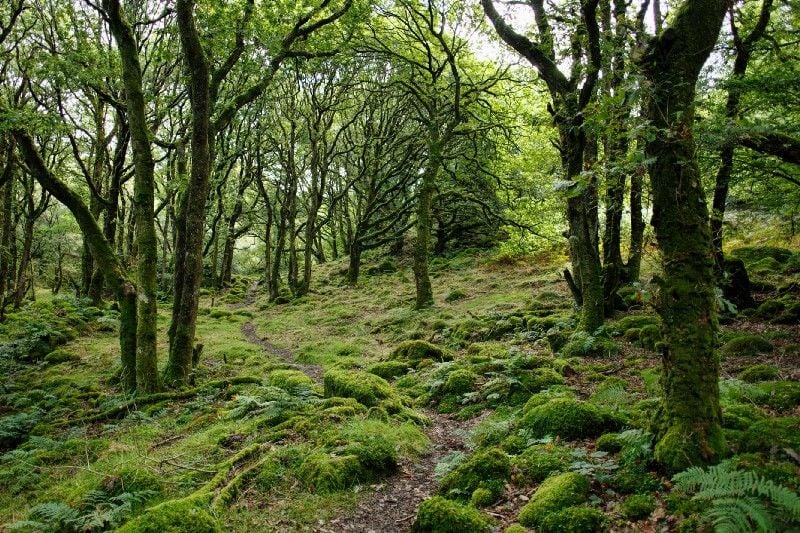
Growing roots and trees at Brink
Forests have been inspiring and guiding humanity for millennia, providing us with food, medicine, livelihoods, shelter and protection. This wisdom is quickly turning into an evidence base that suggests the complexity of forest ecosystems could also be key to better understanding and navigating the complexity of our social ecosystems.
“As our knowledge about plant life unfolds, human vocabulary and imaginations must adapt” — Robin Wall Kimmerer, botanist and member of the Citizen Potawatomi Nation
Increasingly at Brink, we’ve been taking inspiration from forest ecosystems to guide our work, in particular our Practices at Brink.
Inspired by Spotify’s squads and teams model of organising teams, we have a criss cross, or matrix, way of organising ourselves. We have programmes of work like the EdTech Hub: an 8 year exploration into how we improve educational learning outcomes using technology, and the Wellcome Evidence Accelerator: a venture accelerating science into the workplace in order to improve workers’ health at scale. Each programme is supported by a core team of Brinksters (the collective term for those working at or with Brink), a consortium of brilliant partner organisations, and our Practices at Brink.
Our Practices cross our work and aim to supercharge our work with a particular skill set or knowledge base. By weaving this across Brink, we aim to catalyse learning and increase our impact.
🧠 Human Learning Systems coaches, connects and catalyses learning so teams and organisations can adapt towards big missions working on complex problems. This looks like building cultures of reflection, building psychological safety or setting up cross functional teams and organisational processes to underline agility.
✨ Collectives catalyses groups of people to learn from one another and collaborate. This looks like building communities of social entrepreneurs working in conflict zones or a network of cities on a digital transformation journey.

Of course, we know, humans aren’t rational, and solving social problems isn’t a linear process, so in reality it looks a little more like this…
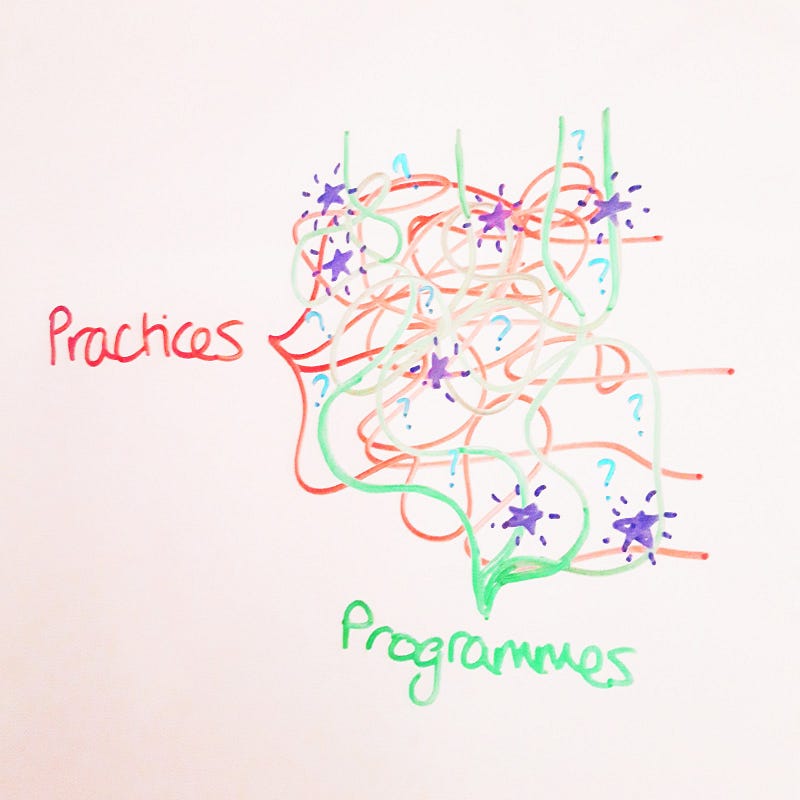
Nestled in here are bright moments of clarity or ‘aha’ that emerge from deep mist and knottiness. They form around questions like:
- How can we bring new ideas and skills into our work whilst also codifying what works?
- How do we enable programmes and Brinksters to consistently learn from each other so as to not reinvent the wheel?
- When we see people working in similar areas or on similar issues, how can we connect these groups together in order to increase their impact?
Whilst I was puzzling over these questions above I took a week off which to walk around my local English countryside.
It was autumn and the trees were shining like peacocks in their cloaks of stunning colours, I felt totally inspired. Meanwhile I happened to be reading a book called the Overstory by Richard Powers, a novel of intertwining stories about people discovering trees which included incredible recent science about tree ecosystems.
When you look at a tree, did you know that beneath your feet is a network of roots from that tree reaching for up to 40 miles around to find the nutrients it needs to keep growing healthy and strong?
I started to think about how Collectives as a practice could facilitate nutrients of wisdom exchanging seamlessly across Brink’s roots (us as people) in a way that would make the trees (our programmes) grow taller and stronger: increasing impact in the world!

Trees make up woods, forests or jungles, with a canopy of overlapping leaves. Similarly, Brink is involved with 10 different programmes across the world (the trees!) serving about 150 initiatives in 56 countries. The overlaps (our canopy) are multiple beyond the people, places and 20-ish consortium partner organisations we work with. Collectively (the forest) they are supporting conflict affected communities, improving education and accelerating the global response to Covid19.
If our work is the trees, how do we strengthen the canopy? 🌲
What might we be able to achieve by intentionally bringing diverse people, data and connections together, both the obvious and the serendipitous, across all of the programmes we are involved in at Brink?
For example:
- If you are part of our Frontier Technologies programme, testing how you might use blockchain to tackle the damage of locusts in eastern Africa, what might you be able to learn from a social entrepreneur from the Humanitarian Grand Challenge community who is using AI to better map humanitarian aid in conflict affected communities?
- If you are looking to catalyse innovation in Assistive Technology in Africa what might you learn from people with the same idea, but in education?
- How together might these initiatives come together to work with communities and ecosystems?
Newer science about tree root ecosystems is starting to tell us that forests are not just a collection of trees and roots that happen to be in the same space, but that they operate as a community in order to survive and thrive. They put out signals when they need a particular nutrient at a certain time, and other roots respond to say “over here! I have what you need!” and a swap of nutrients can occur beneath the ground.
As a group of individuals at Brink, we must build ways to ensure we are connecting and collaborating across programmes in a way that means we aren’t reinventing the wheel but improving our collective muscle in the areas that support our work. We have weekly ‘Show the Thing’’ meetings where we have ten minute slots for anyone to sign up to share a piece of their work or thinking. We have a few peer groups organically emerging to discuss and learn from one another on specific topics such as systems, ethics and growing peer communities.
If our practice is a root ecosystem, how do we keep growing it? 🌱
What becomes possible when we create a vibrant network of learning that feeds our programmes and increases their impact in the world?
If you are someone weaving together connections across groups of changemakers, boundaries and cultures, does the idea of building strong roots ecosystems resonate with you? What does it look like and what is the impact you hope to see in the trees and in the world?
We’d love to hear your reflections so do get in touch at [email protected].
For more inspiration about the intertwining nature of our work, have a read of our approach to ethics and equity, or Human Learning Systems
For more on the wisdom of trees and forests, have a listen to ‘Smarty Plants’ by RadioLab
If you are interested in how we’ve understood and modelled our cultures on them over the centuries watch this film by the Camden Arts Centre that follows their exhibition The Botanical Mind: Art, Mysticism and The Cosmic Tree
